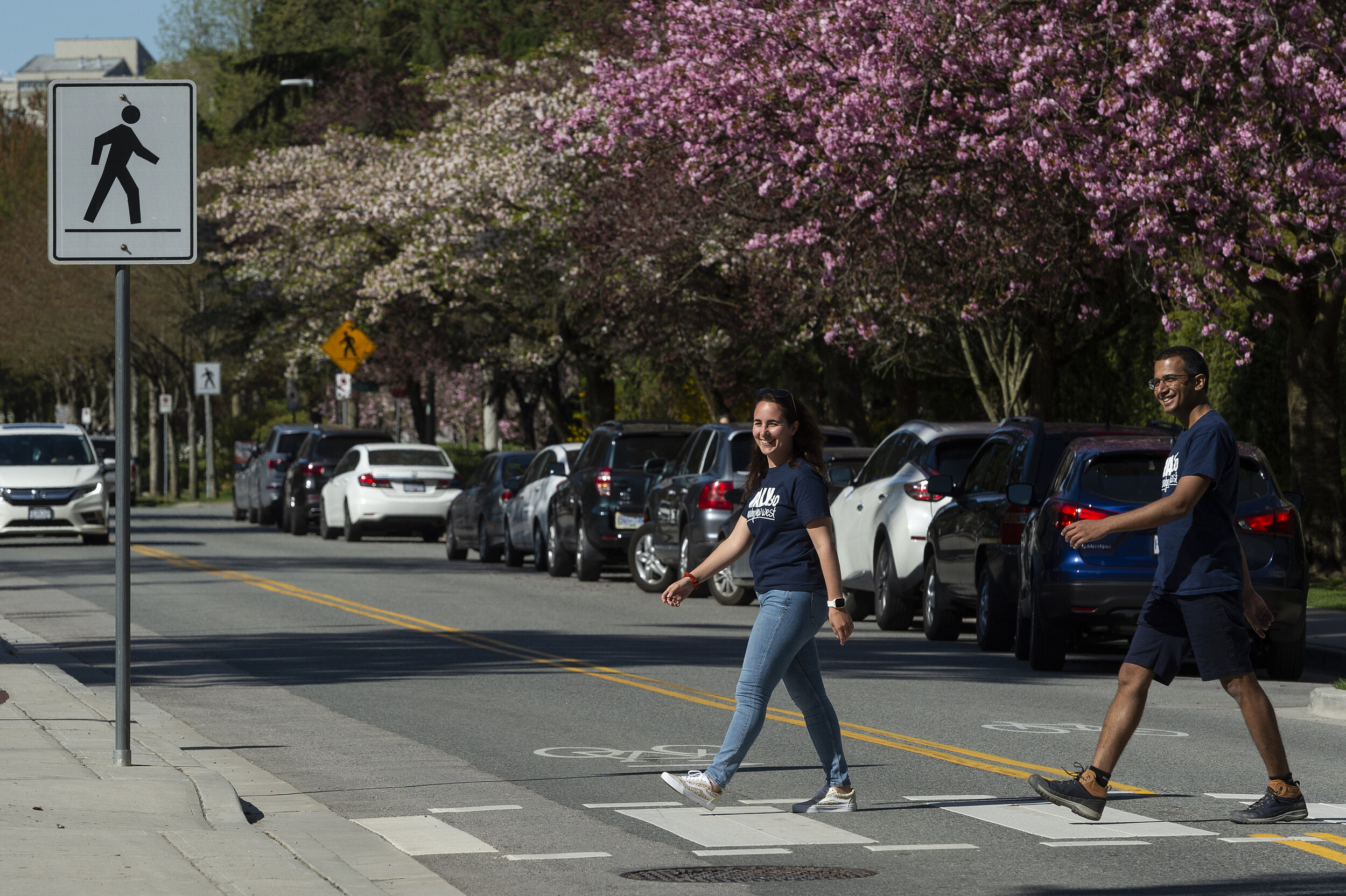
STORIES & NEWS
Walk30 Week 1 Theme: Active Transportation
More and more people are choosing active transportation as an affordable, environmentally sustainable, and healthy way to get to their destinations without a car! So what is active transportation, anyway?
Now trending: #WALKING
We read that we stopped walking for commuting but we have walked in a more pleasurable way. We have been discovering our neighbourhoods and we have claimed the streets for our on-foot trips.
Walking for a healthier you and the planet
Some love walking on rainy days; some, prefer feeling the sun rays on their skin. How are environmental effects affecting your walking?
Walking gets you from A to B
Walking with a purpose saves you time during the day and makes you feel with a higher level of accomplishment than circling a race track. Being able to step outside and go to the market for your groceries, or realize that school is just a couple of blocks away is only one of the benefits of pursuing this urban trend.
Walking for All. Walking with the senses.
Walking is not only being able to put one foot in front of the other, and repeat. Walking is an occurrence that is highly influenced by the surroundings.
Walk for your body & mind. Get out, get walking!
We are all aware of how these months have influenced our lives, but if there must be some positive aspect and some hope in our every day, it is that we reassured ourselves that being able to go for a walk is like a lifeline. Walking might be a light physical activity but it encompasses a huge mental exercise.
Twelfth St. - New West’s 150yr old heritage
Today’s walk is about being local and staying close to home. We were very fortunate to have Mary Wilson guide and show us the hidden gems of this part of New Westminster.
Walk along Byrne Creek: A nature walk connected by zero-emission transit
Our weekly walking route starts on Edmonds and goes along Byrne Creek.
Walk30 2021: How to get your school to win the Challenge?
Naimah Asad is a mom of 3 kids, teacher of Grade 4 in Lord Kelvin and she takes walking seriously. In 2018 they won the first time, while she was full-term pregnant. She kindly answered some of our questions and we wanted to share them with you.
Walkable New Westminster- Exploring the renewed Pier Park
This week, we visited the renewed Pier Park in New Westminster. It officially opened on April 2nd, and we didn’t want to miss it!
The Burnaby Lake: a perfect nature-walk right within the city
For those who like to walk, who are avid walkers, we bring a walking route that might be too long for our standards: 12.5 km. At a slow and comfortable pace could take you around 3 hours to cover. Don’t be intimidated and try parts of the route.
Walkable Burnaby - A fun way to explore your neighborhood
E Hastings in Burnaby is a commercial street filled with small businesses full of flavors all around the world, salons, spas, and other small shops and retailers that give the street the perfect character for being a great walking route.
Neighborhood walking tour - Promising developments in Burnaby
Burnaby is a lovely, growing city witnessing so many new developments. In this walking tour, we took a short walk-hop-SkyTrain from Gilmore to Brentwood Town Center (Millennium line). So many developments coming up, so we thought of checking out the neighborhood.
Green space within the city? It’s a walk in the park…literally.
As the winter season progresses, non-essential travel restrictions persist and many of us are feeling stuck at home. If you have had too much screen time and are looking to do something outdoors, get your facemask and hand sanitizer and take a SkyTrain journey to Burnaby Central Park.







